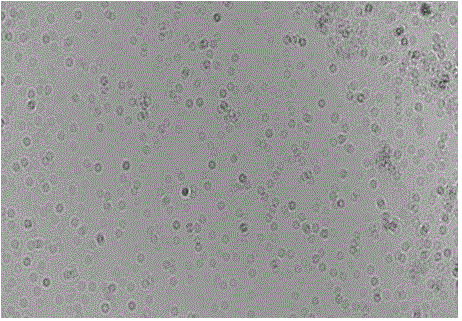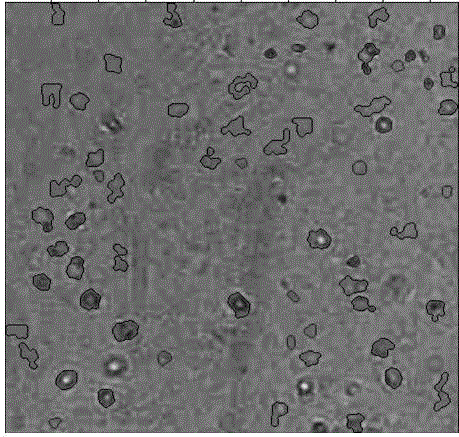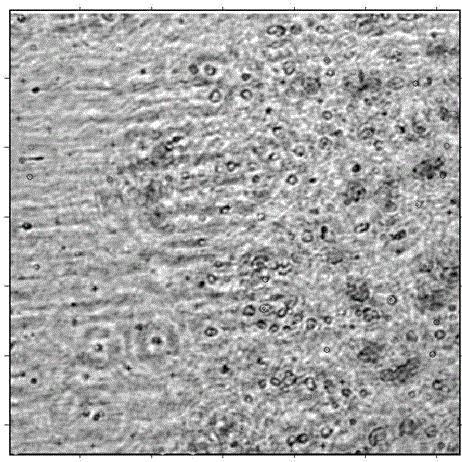Fresh water algae rough classification and counting method based on lensless holographic imaging
A holographic imaging and lensless technology, applied in the field of holographic imaging, can solve the problems of low computational efficiency, incompatibility between algae classification and computational efficiency and accuracy, and high algorithm complexity, and achieve ideal and good results for rough classification and counting Rough classification and counting effect, effect of short image processing time
- Summary
- Abstract
- Description
- Claims
- Application Information
AI Technical Summary
Problems solved by technology
Method used
Image
Examples
Embodiment Construction
[0022] The present invention will be further described below in conjunction with drawings and embodiments. see Figure 1 to Figure 3 , a method for rough classification and counting of freshwater algae cells based on lensless holographic imaging, the steps are as follows:
[0023] 1) Binarize the holographic image of freshwater algae acquired by the lensless holographic imaging device, and calculate the ratio S of the area of all cells to the entire image area. When S≤5, go to step 2); otherwise, go to step 3);
[0024] 2) Use the method based on the cell shape feature to simply classify and count the scattered and small number of cell images; the steps are as follows:
[0025] a) Calculate data such as the length, width, area and the size of the circumscribed rectangle of each cell in the binarized image, and calculate the size of shape characteristic parameters such as circularity and rectangularity accordingly:
[0026] C ...
PUM
 Login to View More
Login to View More Abstract
Description
Claims
Application Information
 Login to View More
Login to View More - R&D
- Intellectual Property
- Life Sciences
- Materials
- Tech Scout
- Unparalleled Data Quality
- Higher Quality Content
- 60% Fewer Hallucinations
Browse by: Latest US Patents, China's latest patents, Technical Efficacy Thesaurus, Application Domain, Technology Topic, Popular Technical Reports.
© 2025 PatSnap. All rights reserved.Legal|Privacy policy|Modern Slavery Act Transparency Statement|Sitemap|About US| Contact US: help@patsnap.com



